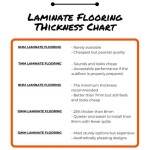Electric Radiant Heat Flooring: A Comprehensive Overview
Electric radiant heat flooring represents a modern and efficient method of heating residential and commercial spaces. Unlike traditional forced-air systems that heat the air, radiant heat warms objects and surfaces directly, creating a more comfortable and consistent temperature throughout a room. This method offers numerous advantages, including improved energy efficiency, reduced allergen circulation, and enhanced comfort. This article explores the principles of electric radiant heat flooring, its components, installation considerations, benefits, and maintenance aspects.
The fundamental principle behind electric radiant heat flooring is the transfer of thermal energy via electromagnetic radiation. Electric resistance cables or mats embedded beneath the floor surface generate heat when an electric current passes through them. This heat then radiates upwards, warming the floor itself, and subsequently the objects and people in the room. The infrared radiation emitted by the floor penetrates the air without significantly heating it, directly warming surfaces such as furniture, walls, and occupants. This direct heating bypasses the energy loss associated with convective air currents inherent in forced-air systems, leading to greater efficiency.
Electric radiant heat is suitable for various flooring materials, including tile, stone, laminate, engineered wood, and even some types of carpet. The compatibility depends on the material's ability to conduct and retain heat without warping or degrading under prolonged exposure to the elevated temperatures. Proper installation and material selection are crucial to ensure optimal performance and prevent damage to the flooring.
Key Components of an Electric Radiant Heat System
An electric radiant heat system comprises several essential components working in concert to deliver consistent and reliable heating. These components include heating cables or mats, a thermostat, a floor sensor, and a power supply.
Heating cables or mats are the core elements responsible for generating heat. Heating cables are typically flexible wires embedded in the subfloor. These cables offer versatility in design, allowing for customized heating patterns to accommodate specific room layouts and furniture placement. Heating mats, on the other hand, consist of heating cables pre-attached to a mesh backing, simplifying installation and ensuring uniform spacing. Both cables and mats are available in various voltage and wattage configurations to suit different heating requirements and power availability.
The thermostat regulates the operation of the heating system, maintaining the desired temperature. Modern thermostats often incorporate programmable features, allowing users to set different temperature schedules for various times of the day or week. Some thermostats even integrate with smart home systems, enabling remote control via smartphone or voice commands. Advanced thermostats also provide energy monitoring capabilities, allowing users to track their energy consumption and optimize their heating settings for maximum efficiency.
A floor sensor monitors the temperature of the floor surface and communicates this information to the thermostat. This feedback loop enables the thermostat to adjust the power output to the heating cables or mats, preventing overheating and ensuring consistent temperature control. The floor sensor also acts as a safety mechanism, preventing the system from operating if the floor temperature exceeds a pre-set limit, safeguarding the flooring material from damage.
The power supply provides the electrical current necessary to operate the heating system. Electric radiant heat systems typically operate on either 120V or 240V circuits, depending on the size of the area being heated and the wattage of the heating cables or mats. Proper wiring and circuit protection are essential to ensure safe and reliable operation. A qualified electrician should always handle the electrical connections to ensure compliance with local building codes and safety regulations.
Installation Considerations for Electric Radiant Heat Flooring
Proper installation is paramount to the performance and longevity of an electric radiant heat system. The installation process generally involves preparing the subfloor, laying the heating cables or mats, testing the system, and installing the flooring material.
Subfloor preparation is a critical first step. The subfloor must be clean, level, and free of debris. Any imperfections or irregularities in the subfloor can compromise the contact between the heating elements and the flooring material, leading to uneven heating and potential damage. In some cases, a self-leveling compound may be required to create a perfectly smooth and even surface. The subfloor should also be properly insulated to minimize heat loss to the unheated space below, maximizing energy efficiency.
Laying the heating cables or mats requires careful attention to detail. The heating elements must be spaced according to the manufacturer's instructions to ensure uniform heat distribution. Cables are typically secured to the subfloor using staples or tape, while mats are often self-adhesive. It is crucial to avoid overlapping or damaging the heating elements during installation. A floor plan should be created to document the location of the heating elements, facilitating future repairs or modifications.
Testing the system before installing the flooring material is essential to verify its proper functionality. An insulation resistance test should be performed to check for any damage to the heating cables or mats. The system should also be powered up to ensure that it is heating correctly. Any issues identified during testing should be addressed before proceeding with the flooring installation. This prevents costly repairs after the flooring is installed.
The flooring material is then installed over the heating elements, following the manufacturer's instructions. It's important to use a thin-set mortar or adhesive specifically designed for use with radiant heat systems to ensure proper heat transfer and prevent cracking. The flooring material should be allowed to cure completely before the heating system is turned on. Gradual acclimation of the flooring to the operating temperature is recommended to prevent thermal shock and potential damage.
Benefits of Electric Radiant Heat Flooring
Electric radiant heat flooring offers a multitude of benefits compared to traditional heating systems. These advantages include enhanced comfort, improved energy efficiency, reduced allergen circulation, and quiet operation.
The consistent and even heat distribution provided by radiant flooring creates a more comfortable living environment. Unlike forced-air systems, which can create drafts and hot spots, radiant heat warms the entire floor surface uniformly. This eliminates cold spots and ensures that occupants feel comfortable throughout the room. The gentle warmth emanating from the floor is often described as being more pleasant and natural than the forced air from a conventional furnace.
Electric radiant heat systems can be more energy-efficient than forced-air systems. Because radiant heat directly warms objects and surfaces, it requires less energy to maintain a comfortable temperature. The absence of air ducts eliminates energy losses associated with duct leakage. Furthermore, programmable thermostats allow users to optimize their heating schedules, minimizing energy consumption when the space is unoccupied. Zone heating, a feature often available in electric radiant systems, allows users to heat only the rooms that are being used, further reducing energy waste. Independent studies have demonstrated that radiant heat can reduce heating costs by as much as 30% in some applications.
Radiant heat systems do not circulate air, minimizing the dispersal of dust, allergens, and other airborne particles. This can be particularly beneficial for individuals with allergies or respiratory sensitivities. Forced-air systems, in contrast, can stir up dust and allergens, exacerbating allergy symptoms. The absence of air ducts also eliminates a potential breeding ground for mold and bacteria, further improving indoor air quality. The improved air quality contributes to a healthier and more comfortable living environment.
Electric radiant heat systems operate silently, unlike noisy furnaces or heat pumps. The absence of moving parts eliminates the humming and rattling sounds associated with forced-air systems. This can be a significant advantage, especially in bedrooms or other spaces where quiet is desired. The silent operation of radiant heat contributes to a more peaceful and relaxing living environment.
Electric radiant heat flooring presents a compelling alternative to traditional heating methods, offering a range of benefits including comfort, efficiency, and improved indoor air quality. Careful planning, proper installation, and adherence to manufacturer's guidelines are essential to ensure optimal performance and longevity. As technology advances, electric radiant heat flooring is poised to become an increasingly popular choice for both residential and commercial applications.

Radiant Heating Department Of Energy

Average Radiant Floor Heating Cost In 2024 Forbes Home

Radiant Floor Heating Systems Buyers Guide 2024 Warmup

Radiant Floor Heating 101 Hydronic Vs Electric Williams Plumbing

How To Install Radiant Heat Flooring Forbes Home

Electric Radiant Floor Heating Review What You Need To Know Missoula S Top Quality Plumbing Team

Radiant Floor Heating 101 Hydronic Vs Electric Williams Plumbing

Pros And Cons Of Radiant In Floor Heating Systems Electric Hydronic Bathroom Bedroom Energy Efficient Sun Calgary Ab

Why Use An Electric Heated Floor System Flooring

Emerging Installation Trends For Electric Radiant Floor Heating 2024 10 06 Plumbing Mechanical
Related Posts








